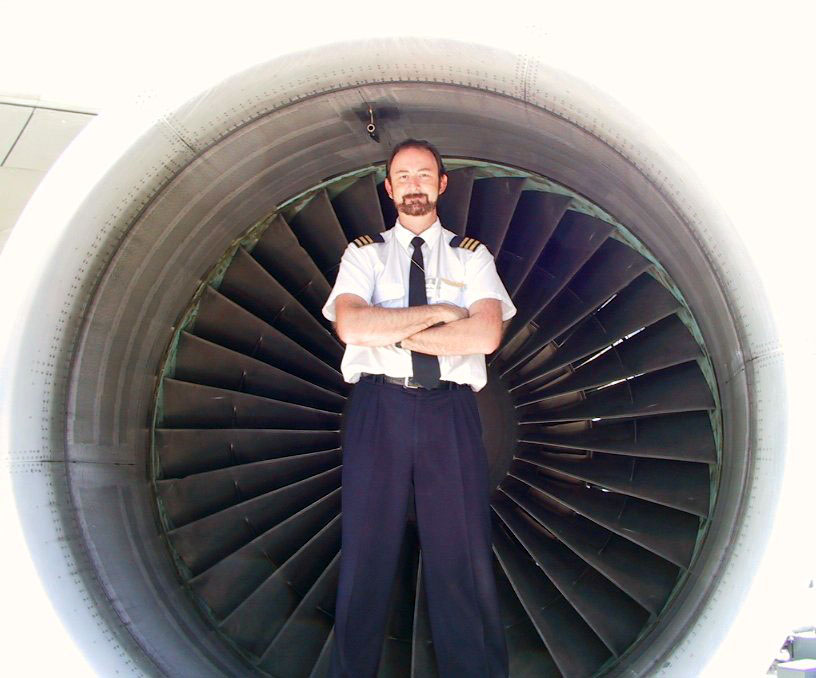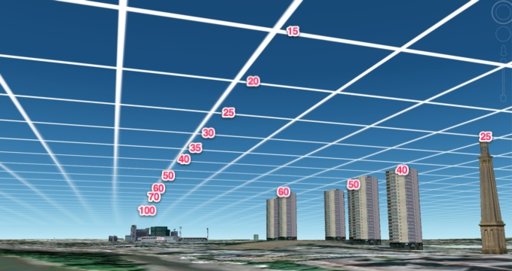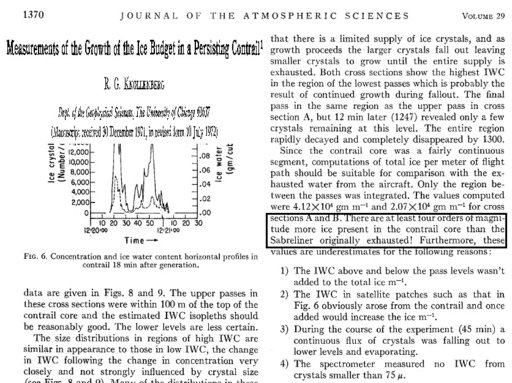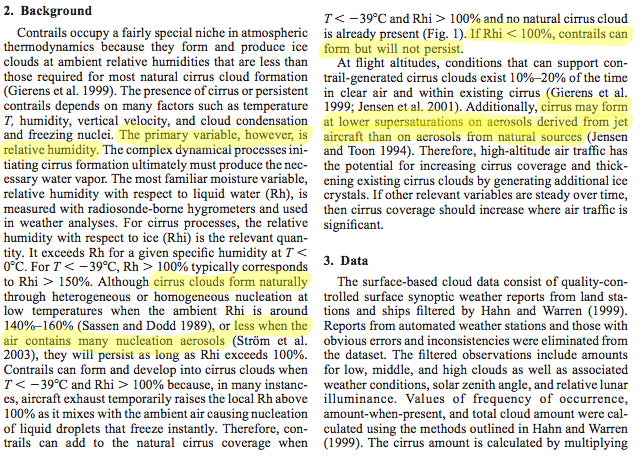Jay Reynolds
Senior Member.
I think this topic is very important, since it goes to the premise of chemtrails. It probably should be first in line. One element of the argument which deserves good coverage, at contrailscience or metabunk, is to explain the "ice-budget" argument.
Essentially, this argument says that there is no amount of a substance could be carried in payload which could account for the optical density of a persistent contrail. The only possible source for such a mass is accretion of water vapor from the air onto the contrail particles formed by the exhaust.
Here is an early reference predating 'chemtrails' from the 1970's which found that the ice budget shows an aged persistent contrail contained four orders of magnitude (104 or 10,000 times more) mass than the original ice mass generated by combustion:
http://ciresweb.colorado.edu/science/groups/pielke/classes/atoc7500/knollenberg72.pdf
Edit: outdated link, paper is at http://journals.ametsoc.org/doi/pdf/10.1175/1520-0469(1972)029<1367:MOTGOT>2.0.CO;2

Maybe some graphic static or animated could help show this fact which would better explain the concept.
Any thoughts?
Essentially, this argument says that there is no amount of a substance could be carried in payload which could account for the optical density of a persistent contrail. The only possible source for such a mass is accretion of water vapor from the air onto the contrail particles formed by the exhaust.
Here is an early reference predating 'chemtrails' from the 1970's which found that the ice budget shows an aged persistent contrail contained four orders of magnitude (104 or 10,000 times more) mass than the original ice mass generated by combustion:
Edit: outdated link, paper is at http://journals.ametsoc.org/doi/pdf/10.1175/1520-0469(1972)029<1367:MOTGOT>2.0.CO;2
Maybe some graphic static or animated could help show this fact which would better explain the concept.
Any thoughts?
Last edited by a moderator:





